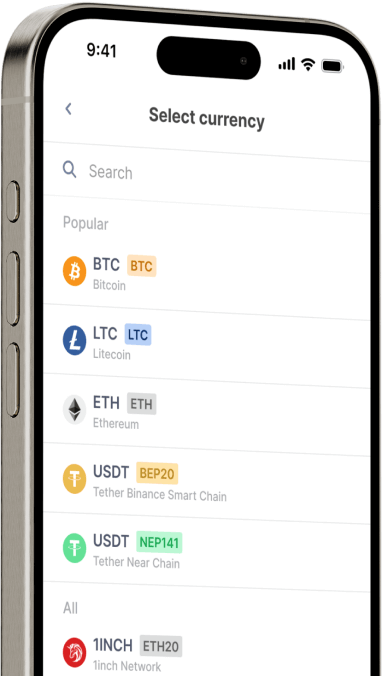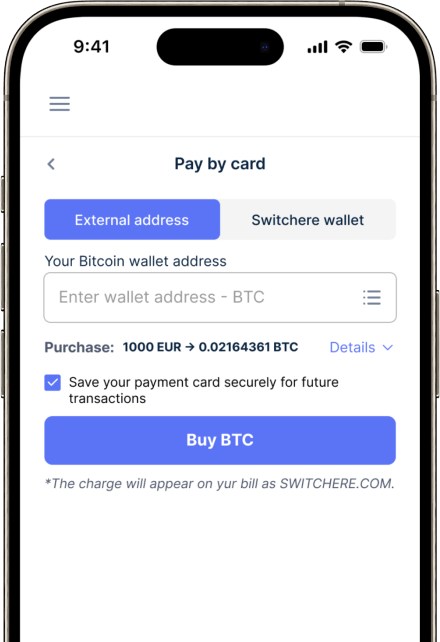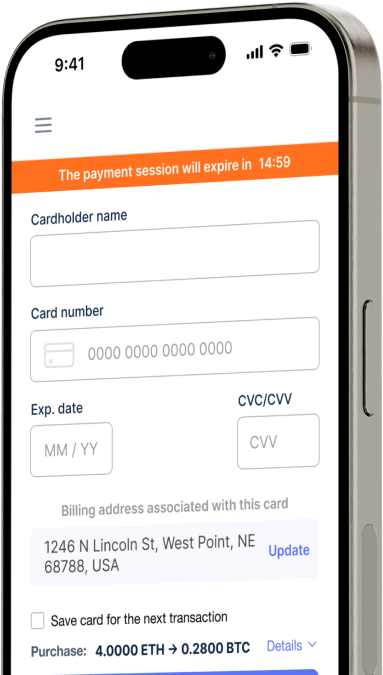Convertire
Japanese yen (JPY) in Bitcoin SV (BSV) istantaneamente
Acquistate facilmente Bitcoin SV (BSV) con Japanese yen (JPY) su Switchere e beneficiate di transazioni rapide e sicure.
Circa
Bitcoin SV (BSV)
Bitcoin SV (BSV), acronimo di Satoshi Vision, è un asset digitale nato da un controverso hard fork della blockchain di Bitcoin Cash (BCH). La sua missione fondamentale è ripristinare quello che i suoi sostenitori ritengono essere il protocollo originale di Bitcoin, come descritto nel white paper di Satoshi Nakamoto. La filosofia centrale del progetto si concentra su una massiccia scalabilità on-chain, principalmente rimuovendo il limite alla dimensione del blocco, consentendo una capacità di blocco illimitata. Questo approccio tecnico è progettato per facilitare un alto volume di transazioni con commissioni estremamente basse, abilitando micropagamenti pratici e operazioni di dati su larga scala direttamente sul registro digitale.
Operando su un meccanismo di consenso Proof-of-Work (PoW), la rete BSV sfrutta il consolidato modello Unspent Transaction Output (UTXO) per la sua sicurezza crittografica. Oltre alla sua funzione di sistema di denaro elettronico peer-to-peer, BSV è progettato per essere un vettore di dati globale. Il token nativo BSV viene utilizzato non solo per le commissioni di transazione, ma anche per scrivere dati sulla blockchain, alimentando applicazioni complesse e smart contract attraverso il suo robusto linguaggio di Scripting. Ciò ha portato allo sviluppo del "Metanet", un concetto di internet on-chain. BSV si posiziona come un livello fondamentale per l'infrastruttura Web3 a livello aziendale, mirando a fornire un'unica blockchain pubblica, stabile e scalabile per l'uso globale.
Acquistare altre 150+ criptovalute per Japanese yen (JPY)
Altre monete per Japanese yen (JPY)
-
JPY per ZRX
-
JPY per 1INCH
-
JPY per AAVE
-
JPY per ACH
-
JPY per ALGO
-
JPY per TLM
-
JPY per ANKR
-
JPY per APE
-
JPY per NFT
-
JPY per API3
-
JPY per APT
-
JPY per ARPA
-
JPY per AUDIO
-
JPY per AVAX
-
JPY per AVAX
-
JPY per AXS
-
JPY per BADGER
-
JPY per BAL
-
JPY per BNT
-
JPY per BAT
-
JPY per BNB
-
JPY per BSW
-
JPY per BSV
-
JPY per BLUR
-
JPY per BONE
-
JPY per CTSI
-
JPY per CELR
-
JPY per CELO
-
JPY per CEL
-
JPY per LINK
-
JPY per CHZ
-
JPY per CHR
-
JPY per C98
-
JPY per COMP
-
JPY per CFX
-
JPY per PEOPLE
-
JPY per CVX
-
JPY per ATOM
-
JPY per CTC
-
JPY per CRV
-
JPY per DAI
-
JPY per DASH
-
JPY per MANA
-
JPY per DENT
-
JPY per DGB
-
JPY per DYDX
-
JPY per XEC
-
JPY per EOS
-
JPY per ETC
-
JPY per ENS
-
JPY per ETHW
-
JPY per FET
-
JPY per FIL
-
JPY per FLOKI
-
JPY per GALA
-
JPY per GNO
-
JPY per ONE
-
JPY per HBAR
-
JPY per HOT
-
JPY per HOOK
-
JPY per ICX
-
JPY per ILV
-
JPY per IMX
-
JPY per INJ
-
JPY per ICP
-
JPY per IOST
-
JPY per IOTX
-
JPY per JASMY
-
JPY per JST
-
JPY per KAVA
-
JPY per KCS
-
JPY per KSM
-
JPY per KNC
-
JPY per LDO
-
JPY per LQTY
-
JPY per LPT
-
JPY per LOOKS
-
JPY per LRC
-
JPY per LUNA
-
JPY per MKR
-
JPY per MASK
-
JPY per EGLD
-
JPY per ALICE
-
JPY per NEAR
-
JPY per XEM
-
JPY per NEXO
-
JPY per NOT
-
JPY per NMR
-
JPY per OKB
-
JPY per OMG
-
JPY per ONT
-
JPY per EDU
-
JPY per OP
-
JPY per OGN
-
JPY per CAKE
-
JPY per PAXG
-
JPY per PENDLE
-
JPY per DOT
-
JPY per POL
-
JPY per QTUM
-
JPY per QNT
-
JPY per RDNT
-
JPY per XRD
-
JPY per RVN
-
JPY per REN
-
JPY per RSR
-
JPY per RLC
-
JPY per RPL
-
JPY per SFP
-
JPY per SHIB
-
JPY per SKL
-
JPY per SXP
-
JPY per STND
-
JPY per STG
-
JPY per XLM
-
JPY per GMT
-
JPY per STORJ
-
JPY per STMX
-
JPY per SUSHI
-
JPY per SNX
-
JPY per USDT (Polygon)
-
JPY per USDT (AVAC)
-
JPY per USDT (BEP20)
-
JPY per USDT (ERC20)
-
JPY per USDT (SPL)
-
JPY per USDT (NEP141)
-
JPY per USDT (FA2)
-
JPY per USDT (TRC20)
-
JPY per USDT (JETTON)
-
JPY per XTZ
-
JPY per GRT
-
JPY per SAND
-
JPY per TFUEL
-
JPY per THETA
-
JPY per RUNE
-
JPY per TON
-
JPY per TUSD (BEP20)
-
JPY per TUSD (TRC20)
-
JPY per TWT
-
JPY per UOS
-
JPY per UMA
-
JPY per UNI
-
JPY per USDC (Polygon)
-
JPY per USDC (SPL)
-
JPY per USDC (OP)
-
JPY per USDC (BEP20)
-
JPY per USDC (AVAC)
-
JPY per USDC (ARB)
-
JPY per USDC (ERC20)
-
JPY per VET
-
JPY per VRA
-
JPY per WAXP
-
JPY per WOO
-
JPY per WLD
-
JPY per WBTC
-
JPY per WMINIMA
-
JPY per XDC
-
JPY per YFI
-
JPY per YGG
-
JPY per ZIL
Come acquistare gli Bitcoin SV (BSV)
Domande frequenti
-
Quali sono i metodi principali per acquistare Bitcoin SV (BSV) con lo Yen giapponese (JPY)?
Il metodo più comune per acquisire Bitcoin SV con JPY è attraverso un exchange di criptovalute giapponese regolamentato che elenca la coppia di trading JPY/BSV. Questo processo include tipicamente la creazione di un account, il completamento della conformità KYC/AML e il finanziamento del proprio conto con Yen giapponesi tramite un bonifico bancario nazionale. Una volta finanziato, è possibile inserire un ordine nel libro degli ordini dell'exchange per acquistare BSV, un asset digitale basato sul protocollo originale di Bitcoin.
-
Quali tipi di commissioni sono coinvolte in una transazione fiat-to-crypto da JPY a BSV?
Tipicamente, si possono incorrere in tre tipi di commissioni. In primo luogo, la tua banca giapponese potrebbe addebitare una commissione per il bonifico bancario in JPY verso l'exchange. In secondo luogo, l'exchange di criptovalute addebiterà una commissione di trading, spesso una percentuale del valore della transazione. Infine, quando sposti i tuoi BSV dall'exchange a un portafoglio sicuro e non-custodial, pagherai una commissione di transazione della rete BSV, progettata per essere molto bassa grazie alle elevate capacità di throughput delle transazioni di BSV.
-
Perché un'azienda in Giappone potrebbe scegliere la coppia JPY/BSV per applicazioni di dati on-chain?
Un'azienda giapponese potrebbe preferire la coppia JPY/BSV perché il protocollo di BSV è progettato per una scalabilità illimitata e un'archiviazione massiccia di dati on-chain. Ciò consente di creare applicazioni a livello aziendale direttamente sulla blockchain (il 'Metanet'). Un gateway fiat diretto in JPY semplifica l'acquisizione di BSV necessario per pagare le commissioni di transazione basse e prevedibili richieste per scrivere grandi quantità di dati sul registro pubblico immutabile, abilitando nuovi modelli di business.
-
Cosa significa 'Satoshi Vision' per la blockchain di BSV quando si effettua una transazione da JPY a BSV?
La 'Satoshi Vision' si riferisce all'obiettivo di BSV di ripristinare il protocollo originale di Bitcoin come progettato da Satoshi Nakamoto. Per una transazione da JPY a BSV, ciò significa che stai acquistando un asset di una rete focalizzata su una scalabilità illimitata, dimensioni dei blocchi massicce e un'elevata velocità di elaborazione delle transazioni. Questo design mira a mantenere le commissioni di rete estremamente basse, rendendo BSV adatto per micropagamenti e applicazioni complesse di archiviazione dati on-chain tramite il Metanet, che sono differenziatori chiave rispetto ad altri fork di Bitcoin.
-
Come posso garantire la sicurezza dei miei BSV dopo averli acquistati con JPY su un exchange?
Per una sicurezza ottimale, è altamente raccomandato ritirare i tuoi Bitcoin SV dall'exchange a un portafoglio digitale personale e non-custodial di cui controlli le chiavi private. Lasciare asset digitali su un exchange li espone a rischi specifici della piattaforma. Utilizzando un portafoglio BSV affidabile (hardware o software), ne assumi la piena proprietà. Esegui sempre un backup sicuro della tua frase seed e non condividere mai le tue chiavi private con nessuno.
-
La grande dimensione dei blocchi di Bitcoin SV influisce sulla finalità di un acquisto JPY/BSV?
La grande dimensione dei blocchi di BSV non influisce negativamente sulla finalità della transazione; piuttosto, è progettata per aumentare il throughput delle transazioni. Una volta che il tuo acquisto da JPY a BSV viene eseguito su un exchange, la successiva transazione blockchain viene trasmessa alla rete. Grazie al suo consenso Proof-of-Work, la finalità della transazione si rafforza con ogni nuovo blocco aggiunto. La grande capacità dei blocchi è intesa per accogliere una scala globale di transazioni senza compromettere il modello di sicurezza del protocollo originale di Bitcoin.




